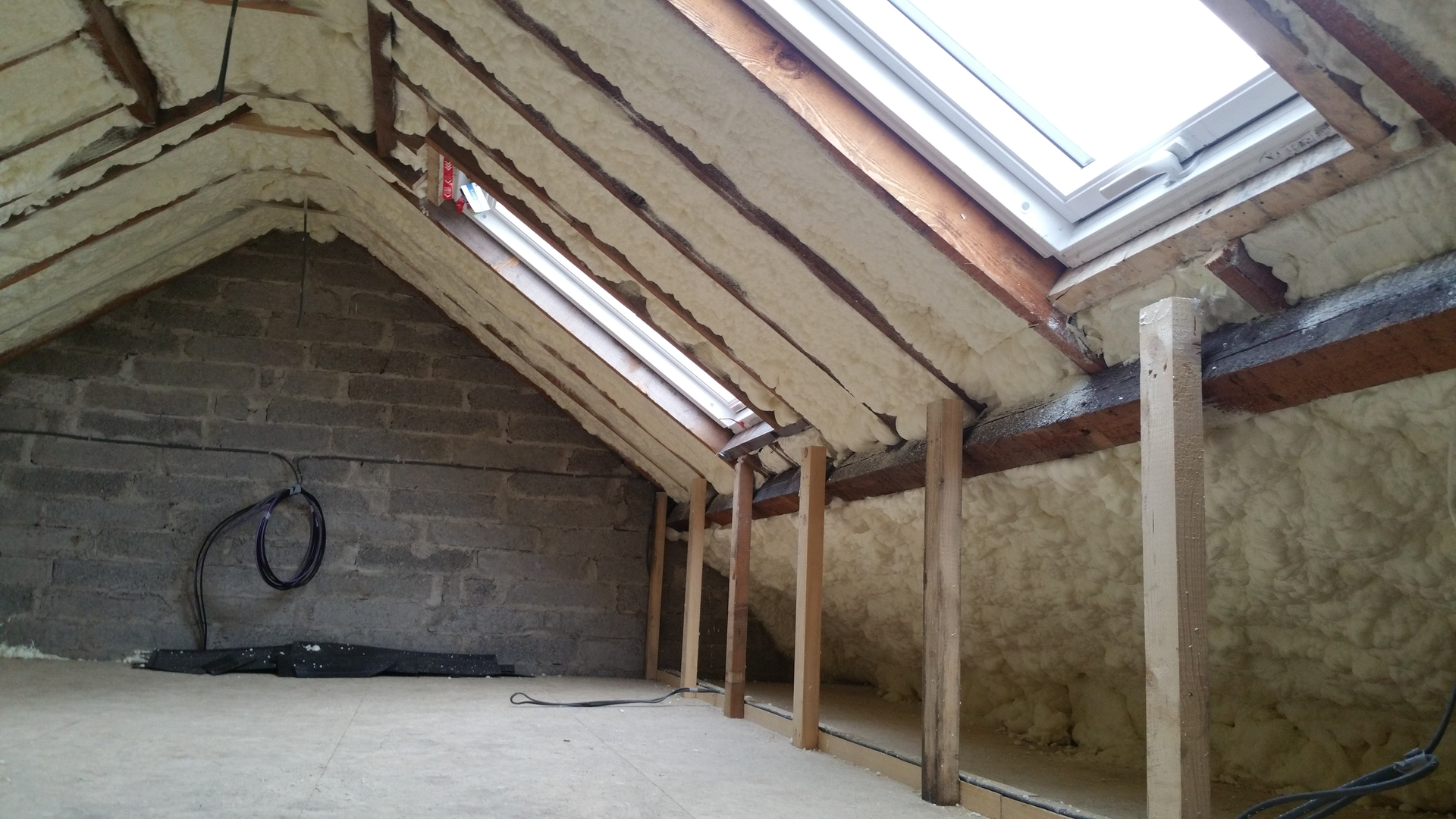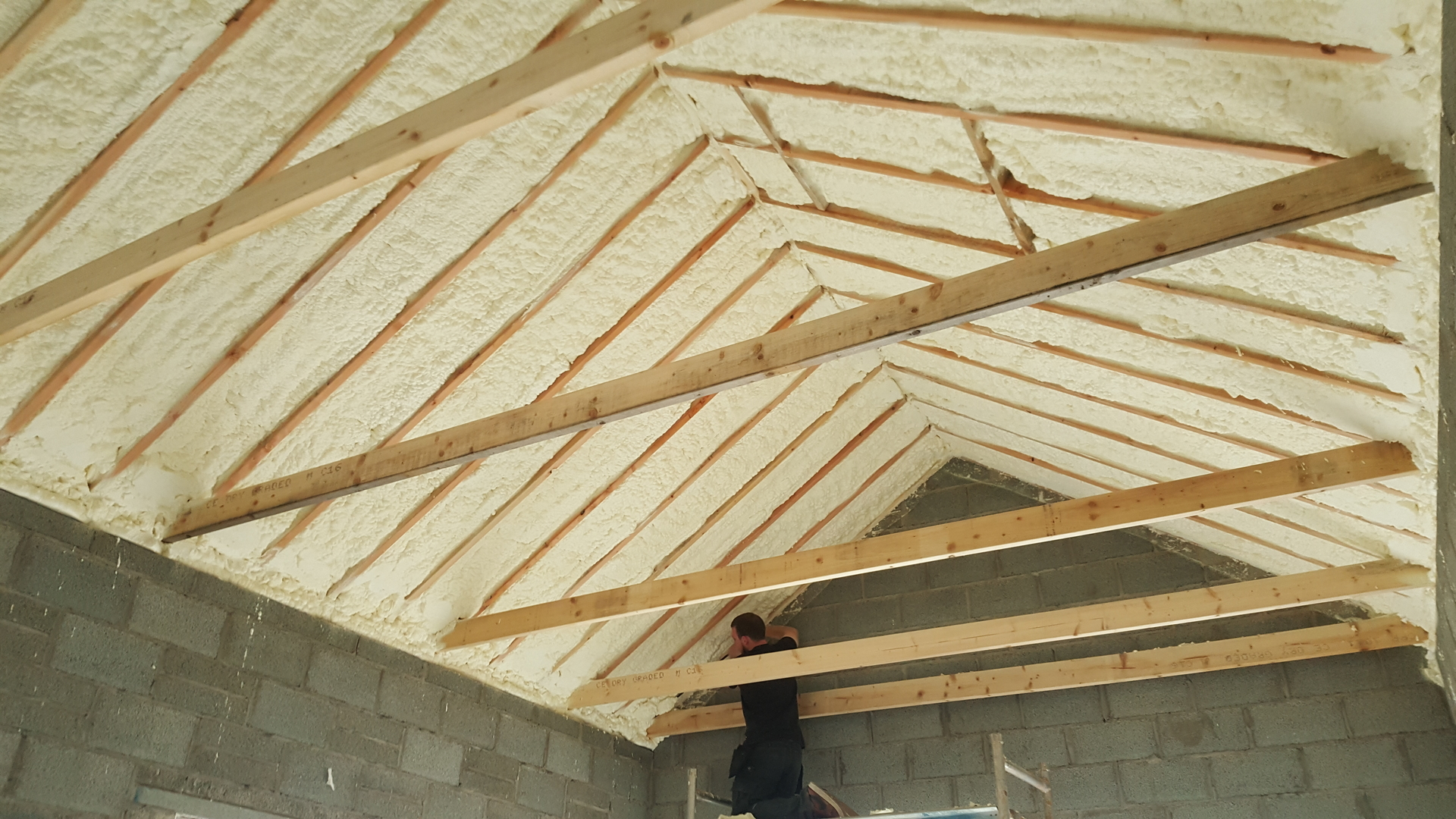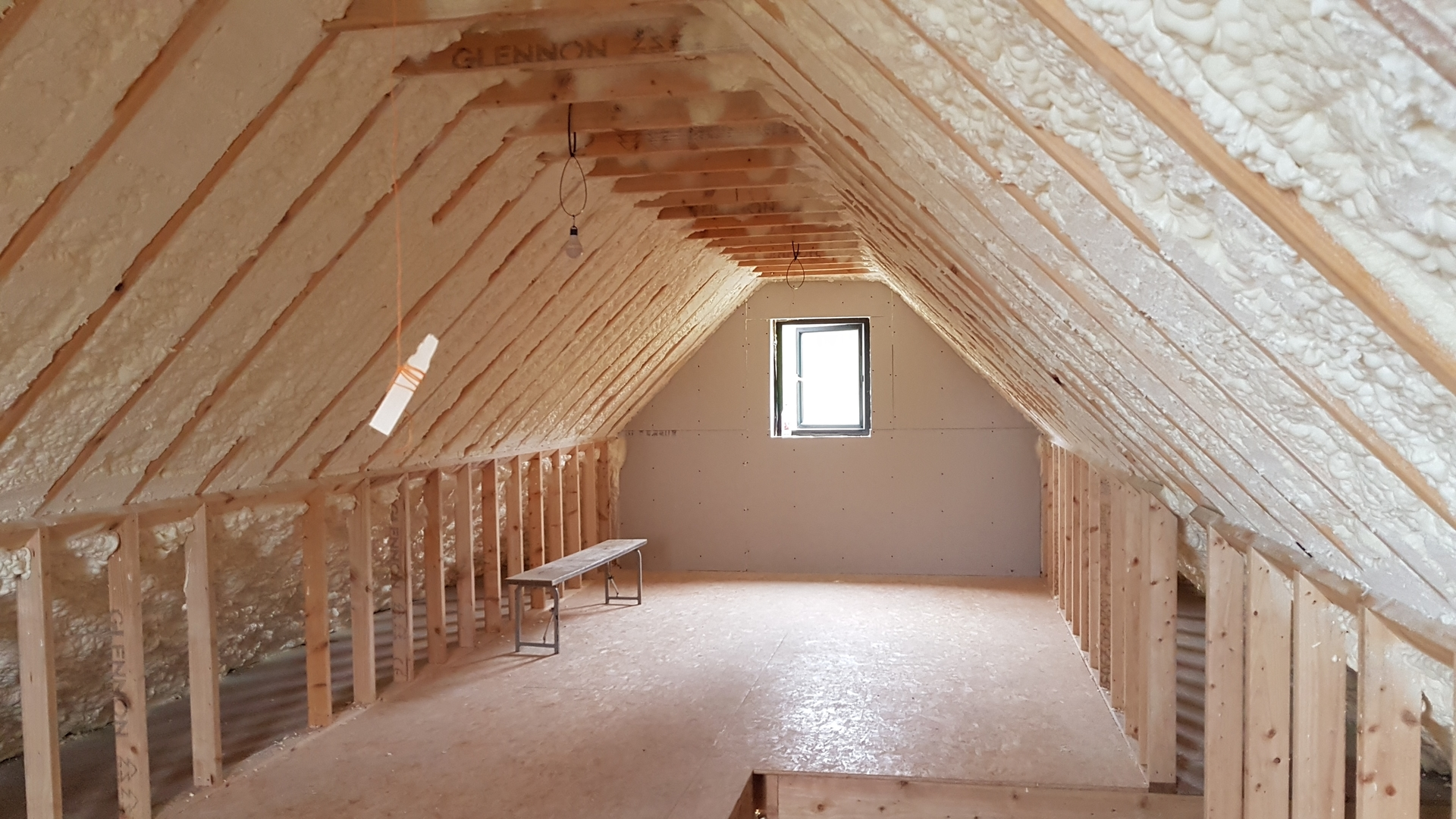Spray Foam Attic Floor
Benefits of Spray Foaming Attic Floor
In the quest for energy efficiency and comfortable living spaces, homeowners are increasingly turning to innovative insulation solutions. One such solution gaining popularity is spray foam attic floor insulation. By combining the benefits of open-cell insulation, air sealing, and superior performance, spray foam insulation has become a game-changer for underfloor and roof insulation. In this article, we will explore the advantages of spray foam attic floor insulation and how it can seal and insulate your attic effectively.
Superior Insulation and Air Sealing:
Spray foam insulation is renowned for its exceptional insulating properties. Open-cell spray foam, in particular, stands out as a highly efficient insulation material for residential properties in the Irish climate. When applied to the attic floor, it creates a seamless and airtight barrier that effectively prevents heat transfer and air leakage from the attic space to the floors below. This superior insulation helps maintain a consistent temperature within your home, reducing the reliance on heating and cooling systems and resulting in energy bill savings.

Air Tightness
Air sealing is a critical aspect of attic insulation. Traditional insulation methods like fiberglass insulation often leave gaps and seams, allowing air to penetrate and escape, compromising energy efficiency. Spray foam attic floor insulation, on the other hand, expands and fills all cavities and crevices, effectively sealing the attic and minimizing air leakage. This airtight seal not only enhances energy efficiency but also prevents drafts, dust, pests and allergens from entering your living spaces.
Enhanced Underfloor and Roof Insulation:
Applying spray foam insulation to the attic floor provides underfloor insulation benefits. This means that the insulation layer helps create a barrier between your living spaces and the unconditioned attic. By insulating the attic floor, you prevent the transfer of heat and cold air from the attic into your home, ensuring a comfortable indoor environment year-round.
Roof insulation is equally important, as it plays a significant role in overall energy efficiency. Spray foam attic floor insulation can extend up the sloping roof surfaces, providing a seamless insulation layer and preventing heat gain or loss through the roof structure. This holistic approach to roof insulation helps maintain a stable indoor temperature, reduces thermal bridging, and enhances the overall performance of your home’s insulation system.

Roof & Attic Insulation
Sealing the Attic:
A properly sealed attic is crucial for overall energy efficiency and comfort. Spray foam attic floor insulation excels in sealing the attic, creating a robust thermal barrier. This insulation method is highly effective in preventing the movement of air and minimizing heat transfer between the attic and living spaces below. As a result, you can enjoy more consistent temperatures throughout your home, reducing hot and cold spots and improving overall comfort levels.
When it comes to maximizing energy efficiency and creating a comfortable living environment, spray foam attic floor insulation is a top-notch solution. Its combination of closed-cell insulation, air sealing properties, and superior performance sets it apart from traditional insulation methods. By opting for spray foam insulation, you can effectively seal your attic, enhance underfloor and roof insulation, and significantly improve the energy efficiency of your home. Consult with a professional insulation contractor to evaluate your attic’s specific requirements and enjoy the long-lasting benefits of spray foam attic floor insulation.

Spray Foam Insulation Cost per sq metre Ireland
Prices for spray foam insulation depend on the type of foam used, whether it is open cell foam or closed cell. Open cell can be used in all domestic applications: attic walls, roofs and floors; closed cell can be used on metal surfaces or concrete surfaces for commercial or industrial insulation, such as container insulation or shed insulation.
Costs will be determined by the area to be insulated. If you are insulating an attic, you will need a 50mm air space between roofing felt and insulation material. This will require a breathable vent card to be attached at the rafters. It will also increase the cost.

Call For A Free Quote on Spray Foam Insulation
How To Contact Us For A Quote & Site Survey
Steps To Follow
- Fill in the Form
- We will call and give you a guide price quote (and schedule a survey)
- We will provide a detailed attic insulation quote, the very same day as the survey
- Then let us know when you want us to start
